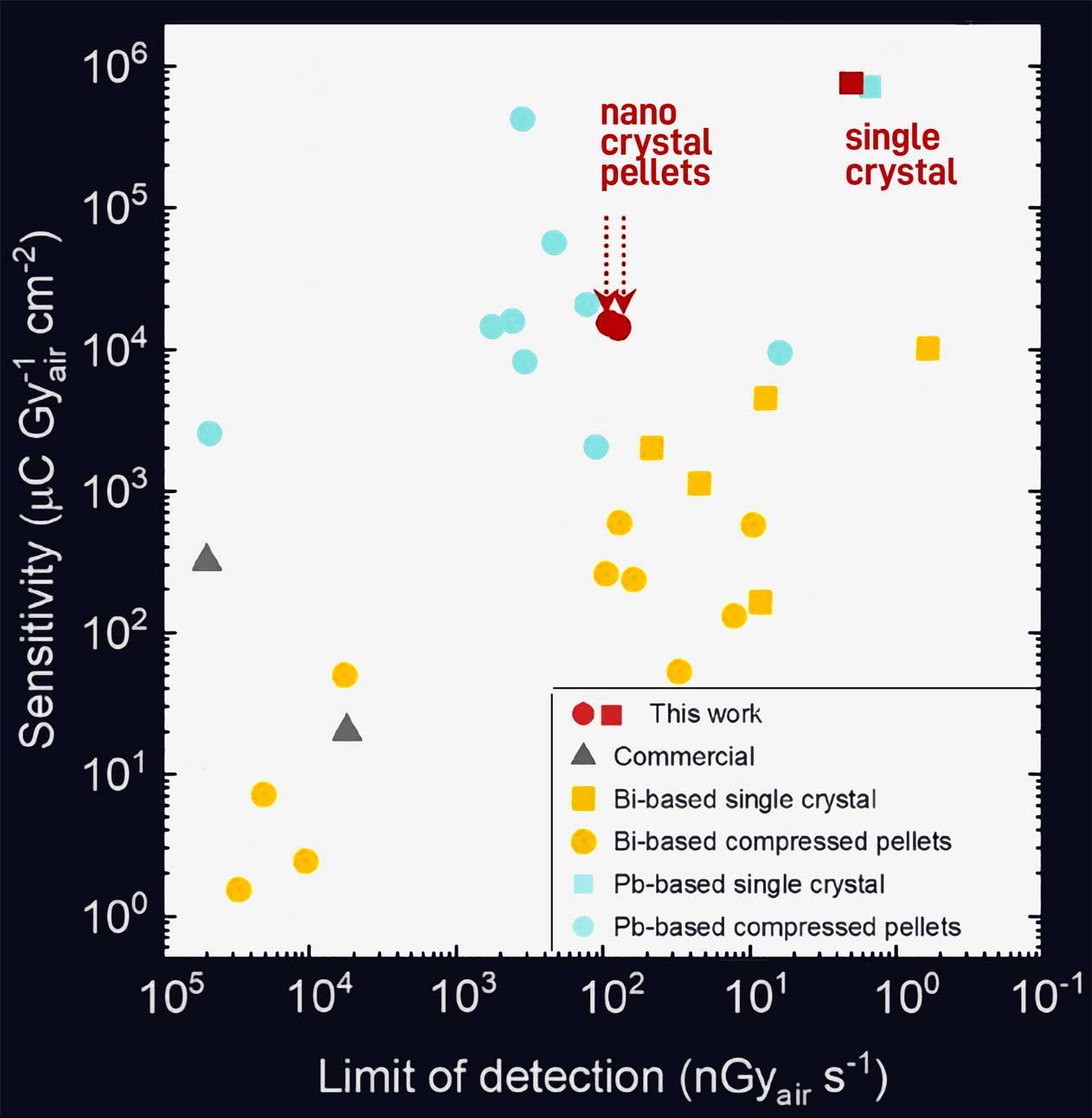
Allan and Olena press ahead in X-ray innovation
Dr. Allan Starkholm and Prof. Olena Maslyanchuk from the team of CSMB-member Prof. Eva Unger have developed a new class of hybrid materials for X-ray detection that could transform medical imaging and industrial testing. Inspired by perovskites, they focused on two bismuth-based organic-inorganic compounds: [(CH₃CH₂)₃S]₆Bi₈I₃₀ and [(CH₃CH₂)₃S]AgBiI₅. These materials, originally explored by Starkholm during his PhD in Stockholm, combine high atomic numbers with stable sulfonium cations — ideal for long-term detector stability.
Their single crystal sets a world record in X-ray sensitivity, but the real gamechanger lies in the nanocrystal pellets.

Triethylsulfonium iodide ((CH3CH2)3SI), Silver iodide (AgI), and bismuth iodide (BiI3) were milled in stoichiometric amounts the create a polycrystalline powder that is then pressed into dense pellets.
A dry mechanochemical synthesis - simply milling the components together for an hour - offers precise stoichiometric control and allows for the creation of complex or even metastable materials. It's not only scalable but also remarkably clean and energy-efficient. The dense pellets produced in this way show excellent charge-transport properties and minimal performance degradation even under intense X-ray exposure. Such robust, cost-effective fabrication routes point to a fast track towards real-world application.

X-ray detector performance of presented single crystal (red square) and compressed pellets (red discs) are compared with reported organic-inorganic hybrid materials (blue and orange) and commercially available ones (grey triangles).
With these materials, radiation doses in X-ray exams could be dramatically reduced, which is a major health benefit. The team has already begun exploring collaborations with companies. Their goal: to develop next-generation X-ray detectors that are not only more sensitive and stable, but also cheaper and greener to produce.
It’s a powerful example of how clever material design and practical synthesis can lead to disruptive innovation.
These results are published as:
A. Starkholm, D. Al-Sabbagh, S. Sarisozen, A. von Reppert, M. Rössle, M. Ostermann, E. Unger, F. Emmerling, L. Kloo, P. H. Svensson, F. Lang, O. Maslyanchuk,
Green Fabrication of Sulfonium-Containing Bismuth Materials for High-Sensitivity X-Ray Detection.
Adv. Mater. 2025, 2418626.
DOI: 10.1002/adma.202418626

